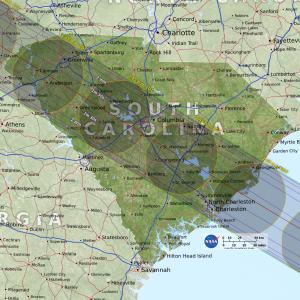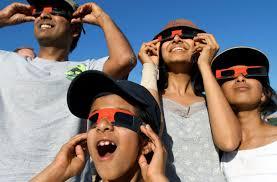In today's hyper-polarized society, there are few things or events that nearly everyone can get behind. But we're now learning that last month some rarely-seen American unification was delivered from the heavens.
Results of a national survey just released found that a remarkable 88 percent of adults watched or personally witnessed the solar eclipse that passed over the continental United States. In absolute terms, that figure represents 215 million American adults, or roughly twice as many of the 111.3 million viewers who watched Super Bowl Ll in February.
Another stark illustration of how the once-in-a-century event captured the imagination of science fans: Nearly 20 million adults travelled to another area of the country to get a better look at this rare celestial event. The path of the total solar eclipse stretched from Oregon to South Carolina, marking the first time in 99 years that it travelled across the continental United States.
"This is a level of exposure that dwarfs the viewership of Super Bowl games and ranks among the most viewed events in American history," concludes Jon Miller of the University of Michigan, who authored the report on the survey's findings. The survey, co-produced by the university in association with NASA, is considered initial, as a follow-up with the same adults is planned for later this year "to assess how viewing the eclipse may have stimulated viewers to seek additional information about eclipses, the sun, the solar system and related astronomical information."
 The August 21 event was such a fascination in South Carolina, where viewing a total eclipse was possible, tourism officials reported that it was the most popular tourist event ever in the state's history. (Map image credit: NASA)
The August 21 event was such a fascination in South Carolina, where viewing a total eclipse was possible, tourism officials reported that it was the most popular tourist event ever in the state's history. (Map image credit: NASA)
The survey of 2,175 adults found that of the 215 million following the event, 154 million watched it directly while another "61 million adults who did not see the eclipse directly viewed the eclipse electronically on a television, computer, tablet, or smart phone screen," according to data and charts included in the report.
Roughly 33 percent of adults who viewed the eclipse – about 72 million Americans – said that they shot pictures or video of the event, and half of those viewers shared either their images or description of the day's events on social media.

But this brand of science was particularly noteworthy to rank and file Americans, the report noted, as it served as a welcomed learning experience.
"Most adult viewers of the eclipse characterized it as enjoyable and educational," wrote Miller, the director of the International Center for the Advancement of Scientific Literacy at U-M's Institute for Social Research. "When asked to agree or disagree with the statement 'watching the eclipse was an enjoyable experience,' American adult viewers of the eclipse gave the experience a mean rating of 7.6 using a zero-to-10 scale." As for "watching the eclipse was an educational experience,” they rated it a 7.0.




